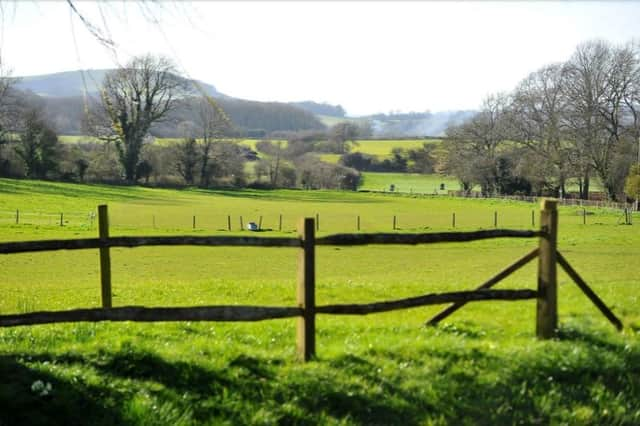'Significant' gas leakage at oil well site in South Downs National Park


Researchers from Clean Air Task Force (CATF), an international climate advocacy group, discovered 'significant' methane leakage and emissions from oil and gas facilities in the UK – including IGas Singleton Oil site.
Researchers equipped with special infrared cameras took careful documentation of emissions at the Singleton Oil site, including videos, photos, and digital photos. They also used a methane gas analyzer to confirm the presence of high concentrations of methane at the site.
Advertisement
Hide AdAdvertisement
Hide AdThe videos are part of a larger campaign across Europe and the world, #CutMethane, #CutMethaneEU, #MethaneMoment.
Emily Mott of the Weald Action Group, said: “I am shocked that in 2021 when we are at a critical juncture in terms of climate change, oil companies are permitted to vent and flare dangerous gases into our atmosphere.
"The Singleton oil well is already the biggest emitter of toxic greenhouse gases in our district. The emissions from the site should be fed back into the grid as they have had permission to do so for years."
"Evidence of unauthorised and unregulated direct emissions from the drill site at Singleton should shame policymakers into taking action sooner rather than later.”
Advertisement
Hide AdAdvertisement
Hide AdFour sources of methane emissions of methane and other toxic gases were discovered to be leaking from the closed tank hatches at IGas’ Singleton site in the South
Downs National Park.
IGas has permission flare and vent most of the gas which has resulted in releasing over 59,000 tonnes of associated gases including methane, carbon dioxide and other noxious gases to the atmosphere from 2012-2020.
Last month, the International Energy Agency said there must be rapid cuts to methane emissions at oil and gas sites to meet climate targets.
The European Parliament approved a strategy to reduce methane emissions and called for improved leak detection at oil and gas sites.
Advertisement
Hide AdAdvertisement
Hide AdSingleton resident Derek Stewart Smith said: "Singleton is just the tip of the toxic berg. The media and the government talk with divided tongues supporting a polluting industry. We are obviously reliant on fossil fuels for some time to come, but there are ways of immediately preventing the environmental pollution.”
A spokesman for IGas said: “The flare at Singleton is permitted by the Environment Agency (EA) for the incineration of surplus gas which currently cannot be utilised on site as a fuel.
As such the products of combustion are mainly CO2 which is many times less potent than methane as a greenhouse gas.
Advertisement
Hide AdAdvertisement
Hide Ad"Under our new EA permits we have to implement gas management plans, this requires the submission of a comprehensive assessment of options to utilise the gas currently being flared at Singleton.
"We are currently looking at ways in which we can use this to generate electricity.
"As a company, where we can, we recover and recycle any associated gas from our oil production, however flaring and venting of small amounts of gases are an important safety feature."
Jonathan Banks, international director, super pollutants, at Clean Air Task Force, said: “The UK has an opportunity to become a world leader in cutting methane pollution.
Advertisement
Hide AdAdvertisement
Hide Ad"They have helped spearhead the Global Methane Pledge at COP26 and are making the right noises on tackling the biggest low-hanging fruit in climate policy.
"But these images show that promises must be turned into action as soon as possible. True climate leadership is achieved by actions, not words.”